Top speed 880 km/h Wingspan 12 m Weight 4,010 kg First flight September 11, 1946 | Range 2,407 km Length 10 m Engine type Allison J35 | |
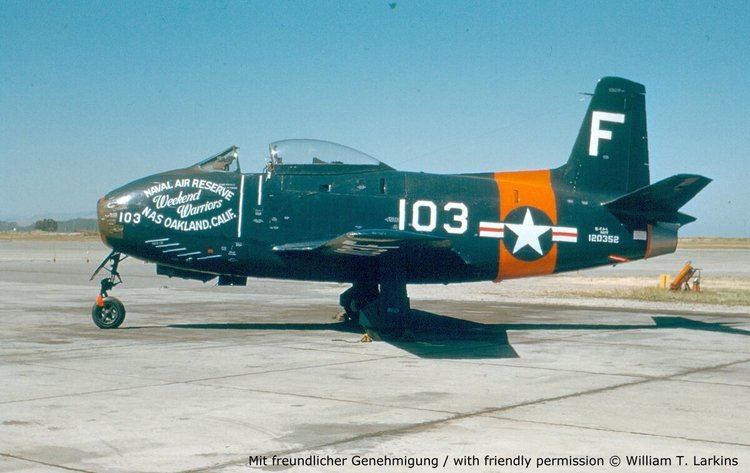 | ||
The North American FJ-1 Fury was the first operational jet aircraft in United States Navy service, and was developed by North American Aviation as the NA-135. The FJ-1 was an early transitional jet of limited success which carried over similar tail surfaces, wing and canopy derived from the piston-engined P-51D Mustang. The evolution of the design to incorporate swept wings would become the basis for the land-based XP-86 prototype - itself originally designed with a very similar straight-wing planform to the FJ-1 airframe - of the United States Air Force's enormously influential F-86 Sabre, which itself formed the basis for the Navy's carrier-based North American FJ-2/-3 Fury.
Contents
- Design and development
- Operational history
- Variants
- Operators
- Aircraft on display
- Specifications FJ 1
- References
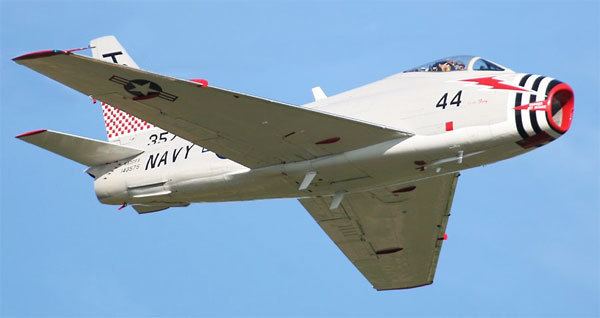
Design and development
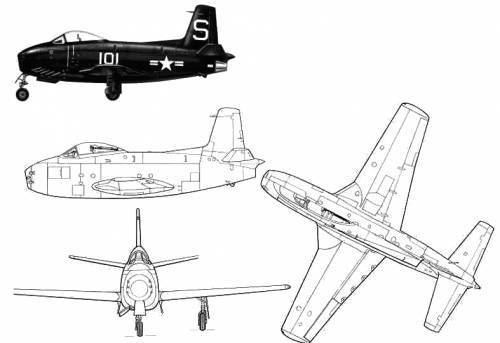
Ordered in late 1944 as the XFJ-1 in competition with proposals from Douglas and Vought, the Fury began as a straight-wing, tricycle gear fighter with a single turbojet passing through the fuselage. The wing, empennage and canopy strongly resembled that of the piston-engined P-51D Mustang, North American Aviation's highly successful World War II fighter, enclosing a relocated cockpit accommodation further forward in relation to the Mustang's design, to ensure good forward pilot visibility for carrier operations.
Operational history
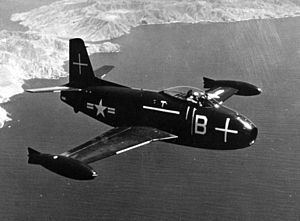
The first flight of the prototype XFJ-1 took place on 11 September 1946, with the first of 30 deliveries beginning in October 1947. Flown by Navy squadron VF-5A, the FJ-1 made the USN's first operational aircraft carrier landing with a jet fighter at sea on 10 March 1948 aboard USS Boxer, pioneering US jet-powered carrier operations and underscoring the need for catapult-equipped carriers. The Fury was capable of launching without catapult assistance, but on a crowded flight deck the capability was of limited use. Taking off without a catapult launch limited the FJ-1 to a perilous, slow climb that was considered too risky for normal operations.
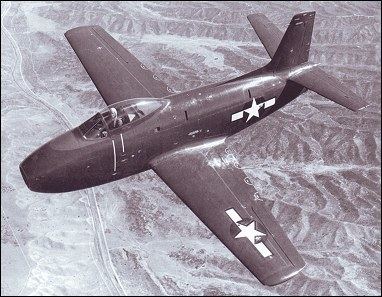
As German research into swept wing aerodynamics was not yet available when the design was finalized, the FJ-1 used a straight wing. No provision for wing-folding had been made as dive brakes mounted in the wings made that option unfeasible. In order to conserve carrier deck space, a unique "kneeling" nose undercarriage along with a swivelling "jockey wheel" allowed the FJ-1 to be stacked tail-high, close to another FJ-1.
Although ordered into production, the initial order for 100 units was trimmed to only 30 aircraft which were mainly used in testing at NAS North Island, California. VF-5A, soon redesignated as VF-51, operated the type in service beginning in August 1948. Although VF-51 went to sea on Boxer by May 1949, the FJ-1s were phased out in favor of the new F9F-2 Panther.
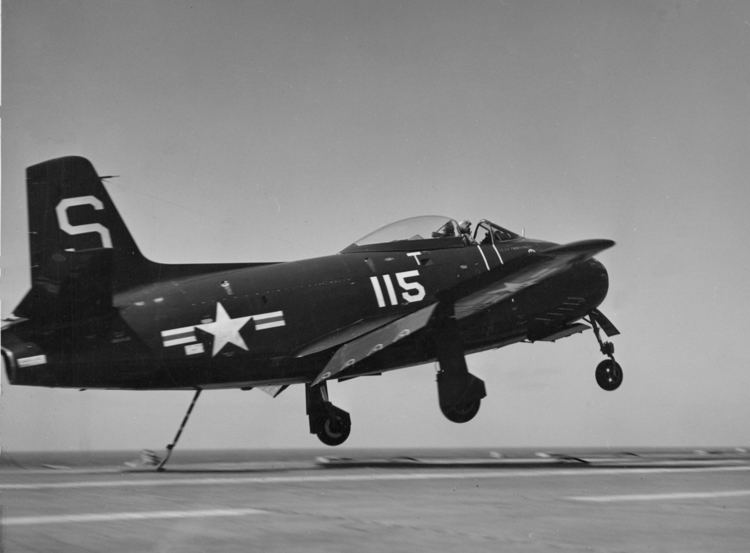
Ending its service career in U.S. Naval Reserve units, the FJ-1 eventually was retired in 1953. The one highlight in its short service life was VF-51's win in the Bendix Trophy Race for jets in September 1948. The unit entered seven FJ-1s, flying from Long Beach, California to Cleveland, Ohio, with VF-51 aircraft taking the first four places, ahead of two California Air National Guard Lockheed F-80 Shooting Stars.
Variants
Operators
Aircraft on display
Specifications (FJ-1)
General characteristics
Performance
Armament
